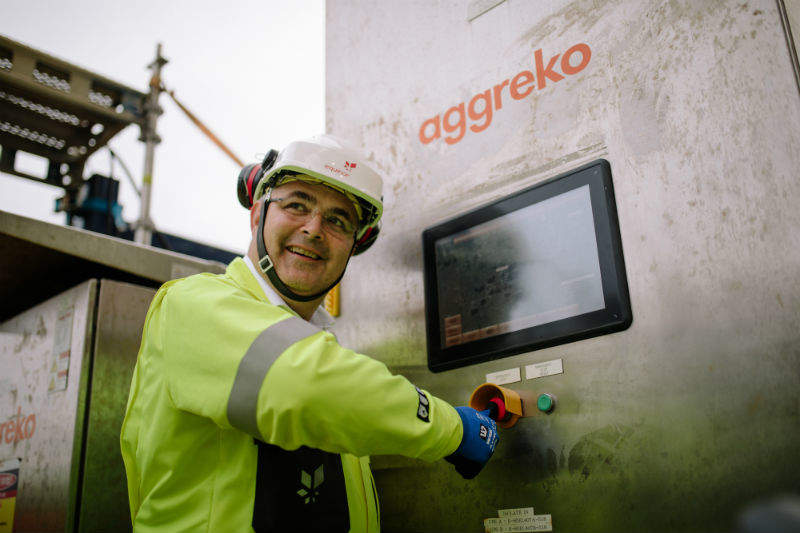
The Johan Sverdrup oilfield, the fifth largest field in the North Sea, has been teeming with activity in 2018. Its operator Equinor has reached a few milestones this year. The company and its partners have completed the riser and drilling platforms, along with steel jackets for these and for the living quarters; the inter-platform connection bridge, 400km of oil and gas pipeline and 200km of power cables. Now, the energy giant has officially switched on its onshore power system, which provides Johan Sverdrup with electricity from the Norwegian national grid for the first time, with the potential of reducing carbon emissions significantly.
The new power-from-shore solution will supply the field with the necessary electricity for up to 50 years and with this innovation, Johan Sverdrup becomes one of the lowest CO2-emitting oil and gas operations worldwide.

Discover B2B Marketing That Performs
Combine business intelligence and editorial excellence to reach engaged professionals across 36 leading media platforms.
Norwegian Minister of Petroleum and Energy Kjell-Børge Freiberg turned off the temporary generators, which previously supplied the field with its power needs, at the shore power system’s official opening event on 9 October.
“This is an important day for Equinor and the Johan Sverdrup partners, so it is a great honour to get help from none other than the Minister with this final task to fully operationalise the power-from-shore solution,” said Equinor’s senior vice-president for operations in the southern North Sea Jez Averty in a company news release.
“With estimated resources of up to 3.2 billion barrels, and a production horizon of more than 50 years, it is key that Johan Sverdrup production is as effective as possible with the lowest possible emissions. Low-carbon production is a key element of the company’s strategy and fully aligned with our roadmaps for climate and for the Norwegian Continental Shelf (NCS).”
Reducing carbon emissions with power-from-shore
At its peak, total production from the field is estimated to reach 660,000 barrels of oil per day. The company can produce oil at a break-even of less than $20 per barrel, with carbon emissions of 0.67kg per barrel. This will help in reducing carbon emissions from Johan Sverdrup by an estimated 460,000 tonnes of CO2 per year, the equivalent of taking 230,000 private cars off the road.

US Tariffs are shifting - will you react or anticipate?
Don’t let policy changes catch you off guard. Stay proactive with real-time data and expert analysis.
By GlobalDataThe move represents Equinor’s first step in eliminating gas-powered offshore generators, instead providing oil and gas platforms with clean, green energy produced onshore. On the back of the recent success of electrifying Johan Sverdrup and other fields in the Utsira High such as Gina Krog and Martin Linger, the energy giant is now considering electrifying three more offshore platforms located in the Norwegian North Sea – Troll C, Sleipner and its tie-in platform Gudrun.
The transition to power-from-shore could help in reducing carbon emissions from these platforms by more than 660,000 tonnes per year. What’s more, it can be accomplished without the need for building new infrastructure, according to Equinor’s executive vice-president for the NCS Arne Sigve Nylund.
“The reason why we are looking at the potential for land-based power to Troll C and the Sleipner area is that they can utilise existing power supply infrastructure, they have large remaining resources and the measures will lead to considerable CO2 reductions,” Nylund said in a press release.
Under the power-from-shore system, the Troll C platform could reduce its CO2 emissions by more than 400,000 tonnes per year if connected to the grid, while electrifying Sleipner and Godrun could cut annual carbon output by around 275,000 tonnes.
Nylund added that there is potential for reducing carbon emissions by more than 1.3 million tons per year, achievable when taking into account all electrified fields.
Equinor would also benefit by cutting 2,756 tonnes of total nitrogen oxide (NOx) emissions, which is known to have less of an environmental impact than carbon dioxide, but is nonetheless very harmful to health.
Equinor has used power from shore to power the Troll A gas platform in the North Sea since it came onstream in 1996, and it has since operated with minimal production emissions.
However, Nylund warned that it’s not always that simple, saying: “Powering major offshore oil and gas installations from land is no easy task. There are many challenges, both technical and financial, and several of our installations are in areas with no possibility for tying in to land-based power supply.”
Equinor has also pioneered the use of offshore floating wind turbines to directly power its oil and gas platforms, which could reduce CO2 emissions by up 200,000 tons when using an 88 megawatt floating windfarm.





